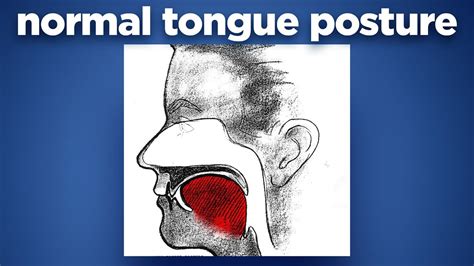What Is Proper Tongue Positioning? Improve Speech

The position of the tongue plays a crucial role in the production of speech sounds, and proper tongue positioning is essential for clear and effective communication. When the tongue is in the correct position, it allows for the precise articulation of sounds, which in turn enhances the overall quality of speech. In this article, we will delve into the world of tongue positioning, exploring its importance, the ideal positions for different speech sounds, and providing tips on how to improve speech through proper tongue placement.
Introduction to Tongue Positioning
The tongue is a highly flexible and agile organ, capable of moving into various positions within the mouth to modify the shape of the oral cavity and alter the flow of air. This flexibility is what allows us to produce a wide range of speech sounds. However, for speech to be clear and understandable, the tongue must be placed in specific positions for different sounds. Improper tongue positioning can lead to speech that is difficult to understand, characterized by mumbling, slurring, or distortions of sounds.
Ideal Tongue Positions for Speech Sounds
Different speech sounds require the tongue to be in different positions. Here are some general guidelines for the ideal tongue positions for various categories of speech sounds:
- Vowels: For vowels, the tongue’s position varies significantly. For example, in the production of the “ee” sound (as in “meet”), the tongue is high and forward in the mouth, close to the hard palate. In contrast, the “ah” sound (as in “father”) requires the tongue to be more relaxed and positioned lower in the mouth.
- Consonants: Consonants can be further divided into several subcategories based on their manner and place of articulation. For example, the “t” and “d” sounds are produced by placing the tongue behind the upper teeth, with the difference between the two sounds being the presence or absence of voicing. The “s” and “z” sounds require the tongue to be close to the roof of the mouth, with the air flowing over the tongue to produce the distinctive hissing sound.
- Diphthongs and Triphthongs: These are combinations of vowel sounds pronounced in a single syllable. The tongue moves smoothly from one position to another to produce these sounds. For instance, the “oy” sound (as in “boy”) starts with the tongue in a position similar to that for “o” and then moves towards the position for “ee”.
Tips for Improving Speech through Proper Tongue Positioning
Improving speech through proper tongue positioning requires practice, patience, and sometimes, professional guidance. Here are some tips to help you enhance your speech:
- Mirror Work: Practice in front of a mirror. Watching how your tongue and lips move when you speak can help you become more aware of your articulation.
- Record Yourself: Listening to recordings of your speech can help identify areas where your tongue positioning might be affecting your articulation.
- Tongue Exercises: Engage in simple exercises like sticking your tongue out, moving it from side to side, or touching the roof of your mouth. These exercises can help increase your tongue’s flexibility and control.
- Articulation Practice: Repeat words that are challenging for you, paying close attention to the positioning of your tongue. For example, if you have trouble with the “th” sound, practice words like “this” and “that”.
- Seek Professional Help: If you find it difficult to improve your speech on your own, consider seeking help from a speech-language pathologist. They can provide personalized exercises and strategies tailored to your specific needs.
Common Challenges and Solutions
Many people face challenges with tongue positioning due to various reasons such as habits formed during childhood, dental issues, or neurological conditions. Here are some common challenges and potential solutions:
- Lisping: Characterized by the misarticulation of the “s” and “z” sounds, often replacing them with “th” sounds. Practice the correct placement of the tongue for these sounds, and consider seeking professional help if the issue persists.
- Mumbling: often due to lazy articulation. Make a conscious effort to enunciate each word clearly, focusing on the individual sounds within words.
- Regional Accents: While accents are a natural part of speech variation, some individuals may wish to modify their accent for better communication in different contexts. Listening to and mimicking the speech of individuals from the desired region can help, as can working with a speech coach.
Conclusion
Proper tongue positioning is fundamental to clear and effective speech. By understanding the ideal positions for different speech sounds and practicing correct articulation, individuals can significantly improve the clarity and quality of their speech. Whether you’re looking to enhance your professional communication skills, overcome a speech impediment, or simply express yourself more confidently, focusing on the position of your tongue can be a powerful step towards achieving your goals. Remember, the journey to improved speech is one of patience and practice, and with the right approach, you can develop the skills necessary to communicate with clarity and precision.
What are some common issues related to improper tongue positioning in speech?
+Common issues include mumbling, slurring of words, misarticulation of specific sounds (like lisping), and overall difficulty in being understood. These can stem from habits, anatomical issues, or neurological conditions.
How can I improve my tongue positioning for better speech?
+Improvement can be achieved through practice, such as mirror work to observe your articulation, recording yourself to identify areas for improvement, engaging in tongue exercises for flexibility and control, and practicing the correct articulation of challenging sounds or words.
Is it necessary to seek professional help for speech improvement related to tongue positioning?
+While many can improve through self-practice, some individuals, especially those with persistent speech impediments or significant difficulties, may benefit from the guidance of a speech-language pathologist who can provide tailored exercises and strategies.

